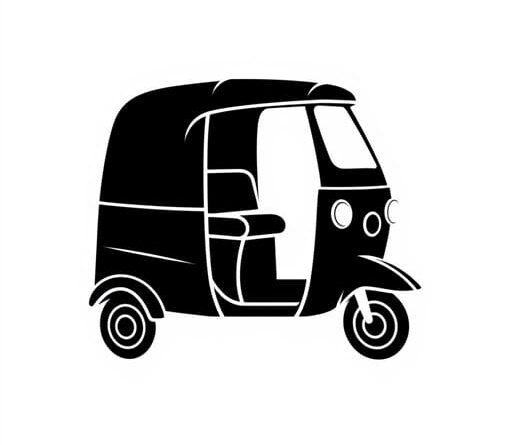how much cc is auto rickshaw
Auto rickshaws are a common sight in many Asian and African cities, offering efficient, affordable transportation for short urban trips. A frequently asked question among drivers, buyers, or curious readers is, ‘How much cc is an auto rickshaw?’ The answer varies depending on the make, model, fuel type, and intended use of the vehicle. This topic will explain the different engine sizes, typical engine displacement (cc), and how cc affects performance, fuel economy, and overall suitability for various needs.
Understanding Engine Displacement (CC)
CC stands for cubic centimeters and refers to the total volume displaced by all the pistons inside the engine’s cylinders. It’s a key measure of an engine’s size and often correlates with its power output. In the context of auto rickshaws small three-wheeled vehicles engine displacement typically ranges between 145 cc and 600 cc. The cc value impacts speed, load capacity, fuel efficiency, and emissions.
Common Engine Sizes in Auto Rickshaws
145 cc: Traditional Two-Stroke Models
Older or simpler auto rickshaws often use 145 cc single-cylinder two-stroke engines. These are lightweight and easy to maintain but tend to be noisier, less fuel-efficient, and more polluting than modern alternatives. An example specification lists a 145.45 cc engine producing around 7 HP for non-commercial ‘rickshaw challenge’ events.
199236 cc: Modern Four-Stroke Autos
More common today are four-stroke engines ranging from approximately 199 cc to 236 cc. These are used in well-known models like the TVS King Deluxe (199.26 cc) and Bajaj RE (236.2 cc).
- TVS King Deluxe: 199.26 cc, 4-stroke single-cylinder, offering smoother performance and better fuel efficiency.
- Bajaj RE: Available in petrol, CNG, LPG with 236.2 cc displacement; diesel variant uses a larger 470.5 cc engine.
470600 cc: Heavy-Duty Diesel Rickshaws
Diesel-powered rickshaws designed for heavier loads or tough driving conditions often feature larger engines. The Bajaj RE diesel model is equipped with a 470.5 cc engine designed for torque and durability.
How Engine CC Affects Performance
Power and Torque
Higher cc engines can generate more horsepower and torque, which increases acceleration, hill-climbing ability, and load capacity. For example, the Bajaj RE 236 cc petrol engine produces approximately 10 HP and 19 Nm torque, while the diesel 470.5 cc model offers greater pulling power for heavier loads.
Fuel Efficiency vs. Power Trade-off
Smaller cc engines are generally more fuel-efficient on light loads but may struggle with performance under pressure. The 145 cc two-stroke models deliver acceptable fuel usage but emit higher pollution. Four-stroke engines in 199236 cc range offer a balanced compromise cleaner emissions, better fuel economy, and usable power. Larger diesel engines sacrifice some fuel efficiency but excel in tough conditions.
Why Multiple CC Options Matter
Regulatory Compliance and Emissions
Emission regulations influence engine design. Many urban areas have phased out polluting two-stroke engines in favor of four-stroke gasoline, CNG/LPG, or diesel alternatives. Manufacturers have responded by offering clean 236 cc petrol and CNG versions to meet stricter standards.
Cost vs. Capability
Lower displacement engines cost less to manufacture, purchase, and maintain, making them ideal for short-town use. On the other hand, higher displacement diesel rickshaws serve businesses, heavy-duty transport, or rural settings where durability outweighs fuel concerns.
Typical CC Categories By Use Case
- 145 cc (Two-Stroke): Cheap, simple, but high emissions now mostly outdated.
- 199236 cc (Four-Stroke Petrol/CNG/LPG): Balanced choice for city use, with better efficiency and compliance.
- 470600 cc (Diesel): High torque for heavy loads and rough terrain, but more expensive.
Choosing the Right CC for Your Needs
Commuters & Light Cargo
Choose a 199236 cc petrol or CNG rickshaw for daily urban commute, light cargo, or rideshare. This engine size provides smooth ride, fuel efficiency (~3540 kmpl), and better emission control.
Commercial Use & Heavy Loads
For carrying multiple passengers, luggage, or navigating sloped areas, consider the higher cc diesel models (470600 cc). While operating costs may be higher, they provide reliability and higher load capacity.
Environmental Compliance
In areas with strict emission standards, opt for CNG or LPG engines offered in 236 cc variants, as these are cleaner and legally compliant compared to two-stroke petrol models.
So, how much cc is an auto rickshaw? It varies greatly, typically falling into these categories:
- ~145 cc: older two-stroke models
- ~199236 cc: modern, efficient four-stroke petrol and CNG versions
- ~470600 cc: heavy-duty diesel versions
Your choice depends on budget, driving conditions, load requirements, and environmental regulations. If you want fuel savings and eco-friendliness, the 236 cc petrol/CNG models strike a good balance. For durability and towing power, the 470600 cc diesel options are preferable. Understanding engine displacement helps make informed decisions for performance, maintenance, and long-term value.
:
